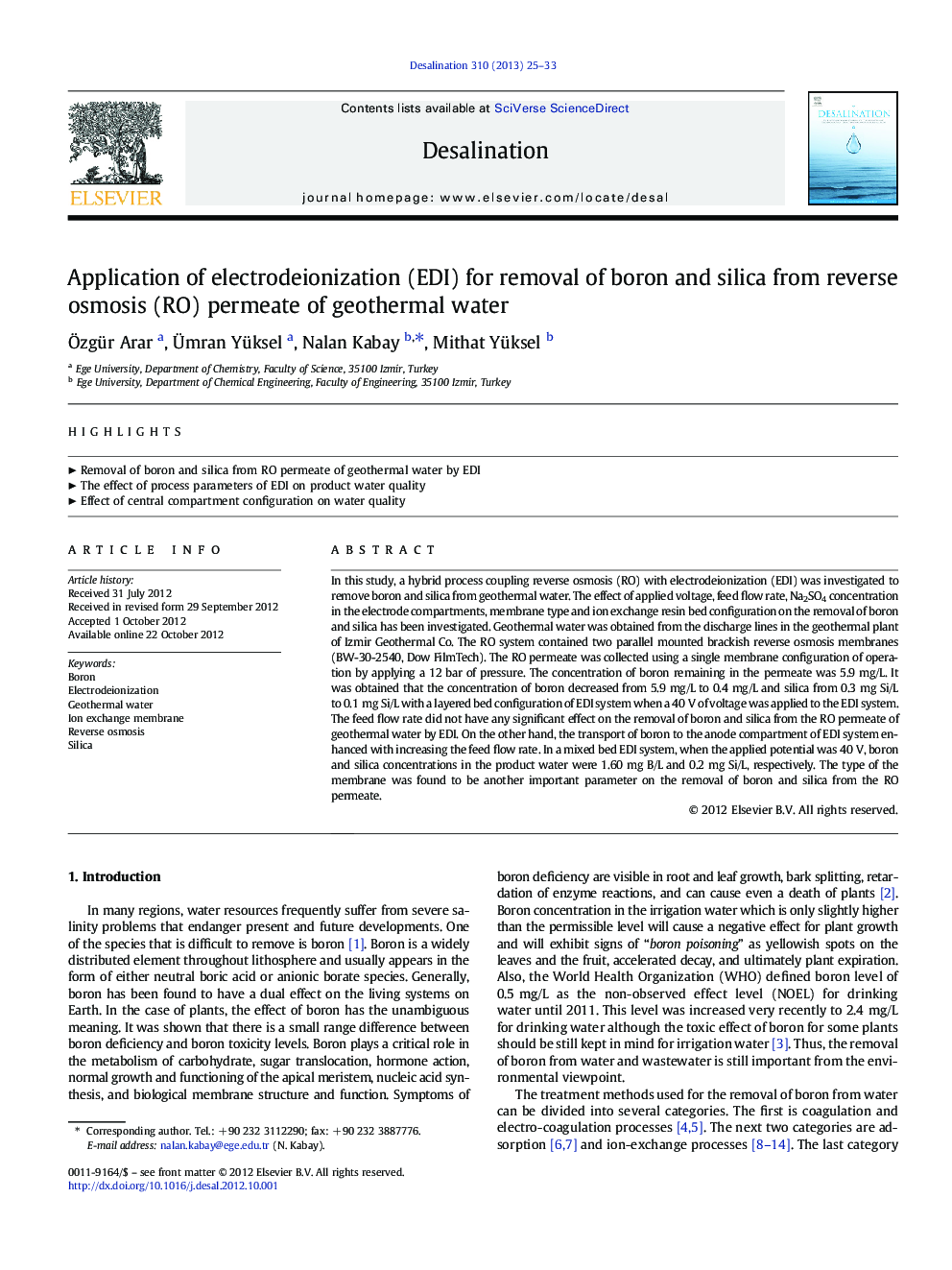| Article ID | Journal | Published Year | Pages | File Type |
|---|---|---|---|---|
| 624174 | Desalination | 2013 | 9 Pages |
In this study, a hybrid process coupling reverse osmosis (RO) with electrodeionization (EDI) was investigated to remove boron and silica from geothermal water. The effect of applied voltage, feed flow rate, Na2SO4 concentration in the electrode compartments, membrane type and ion exchange resin bed configuration on the removal of boron and silica has been investigated. Geothermal water was obtained from the discharge lines in the geothermal plant of Izmir Geothermal Co. The RO system contained two parallel mounted brackish reverse osmosis membranes (BW-30-2540, Dow FilmTech). The RO permeate was collected using a single membrane configuration of operation by applying a 12 bar of pressure. The concentration of boron remaining in the permeate was 5.9 mg/L. It was obtained that the concentration of boron decreased from 5.9 mg/L to 0.4 mg/L and silica from 0.3 mg Si/L to 0.1 mg Si/L with a layered bed configuration of EDI system when a 40 V of voltage was applied to the EDI system. The feed flow rate did not have any significant effect on the removal of boron and silica from the RO permeate of geothermal water by EDI. On the other hand, the transport of boron to the anode compartment of EDI system enhanced with increasing the feed flow rate. In a mixed bed EDI system, when the applied potential was 40 V, boron and silica concentrations in the product water were 1.60 mg B/L and 0.2 mg Si/L, respectively. The type of the membrane was found to be another important parameter on the removal of boron and silica from the RO permeate.
► Removal of boron and silica from RO permeate of geothermal water by EDI ► The effect of process parameters of EDI on product water quality ► Effect of central compartment configuration on water quality
